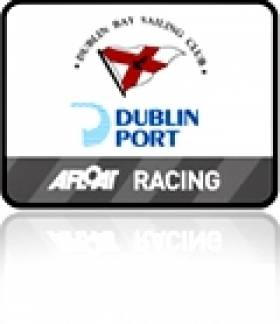Displaying items by tag: dbscx
Dublin Bay Sailing Club (DBSC) Results for 7 August 2012
Dublin Bay Sailing Club Results for 7 AUGUST 2012
CRUISERS 2 - 1. Cor Baby (Keith Kiernan et al), 2. Borraine (Ean Pugh), 3. Bendemeer (L Casey & D Power)
CRUISERS 3 - 1. Asterix (Counihan/Meredith/Bushell), 2. UpD8 (Whelan/McCabe/Carey/Cramer), 3. Grasshopper 2 (K & J Glynn)
CRUISERS 3B - 1. Maranda (Myles Kelly), 2. Wynward (W McCormack), 3. Aslana (J Martin & B Mulkeen)
Combined Classe 3 - 1. Maranda (Myles Kelly), 2. Asterix (Counihan/Meredith/Bushell), 3. UpD8 (Whelan/McCabe/Carey/Cramer)
Ensign - 1. NYC1 (O Prouveur), 2. RIYC 2 (Mark McGibney), 3. RIYC 1 (Tim Goodbody)
FIREBALL - 1. nn (S Oram), 2. Licence to Thrill (Louis Smyth), 3. GBH (M & P Keegan)
GLEN - 1. Pterodactyl (R & D McCaffrey), 2. Glendun (B.Denham et al), 3. Glenshane (P Hogan)
IDRA 14 FOOT - 1. Chaos (Julie Ascoop), 2. Squalls (Stephen Harrison), 3. Dunmoanin (Frank Hamilton)
PY CLASS - 1. Hugh Sheehy (OK Dinghy), 2. Charles Dwyer (Laser), 3. Des Fortune (Finn)
RUFFIAN 23 - 1. Diane ll (Andrew Claffey), 2. Alias (D.Meeke/M.McCarthy), 3. Ruff Diamond (D.Byrne et al)
SIGMA 33 - 1. Pippa lV (G.Kinsman/E.McMahon/M.O'Brien), 2. Pastiche (John Peart et al)
Dublin bay Sailing Club's tightly bunched Cruisers Zero fleet made a fine sight as they filed out of Dublin Bay in rolling waves towards the Burford bank today. The biggest boats of the DBSC fleet were sailing in north easterly winds gusting to over 20 knots. The spectacle of the hard pressed yachts was made all the better by the bright sunshine that filled the bay area this afternoon. Cruisers Zero short tacked towards Poldy buoy before fetching off for the New Ross mark. Some entries were heavily reefed but others, such as Lively Lady, Derek Martin's Beneteau 44.7 from the Royal Irish YC opted for full main. It was a decision that produced good gains on port tack especially as the mean wind strength was often only 16 to 18 knots. Unfortunately there was little chance for spinnakers on the leg back into the bay to New Ross but by the end of this leg, at least one of the J109s had hoisted a blue gennaker. The action was short-lived though. By 3.30pm the bulk of the fleet were back in harbour after only an hour of sailing in the best breeze of the season. With many class starts cancelled it was left to individual boats to venture out and enjoy the surf as many in the Flying fifteens did. Results below:
DUBLIN PORT Dublin Bay Sailing Club Results for 8 MAY 2010
BENETEAU 31.7 Echo- 1. Prospect (Chris Johnston), 2. Flying Machine (Conor O'Gallagher), 3. Thirty Something (Gerry Jones et al)
BENETEAU 31.7 - 1. Prospect (Chris Johnston), 2. Flying Machine (Conor O'Gallagher), 3. Magic (D.O'Sullivan/D.Espey)
CRUISERS 0 Echo - 1. WOW (George Sisk), 2. Lively Lady (Derek Martin)
CRUISERS 0 - 1. WOW (George Sisk), 2. Lively Lady (Derek Martin)
CRUISERS 1 Echo - 1. Jump The Gun (M.Monaghan/J.Kelly), 2. Something Else (J.Hall et al), 3. Indecision (Declan Hayes et al)
CRUISERS 1 - 1. Something Else (J.Hall et al), 2. Aztec 3 (Peter Beamish), 3. Joker 11 (John Maybury)






























































